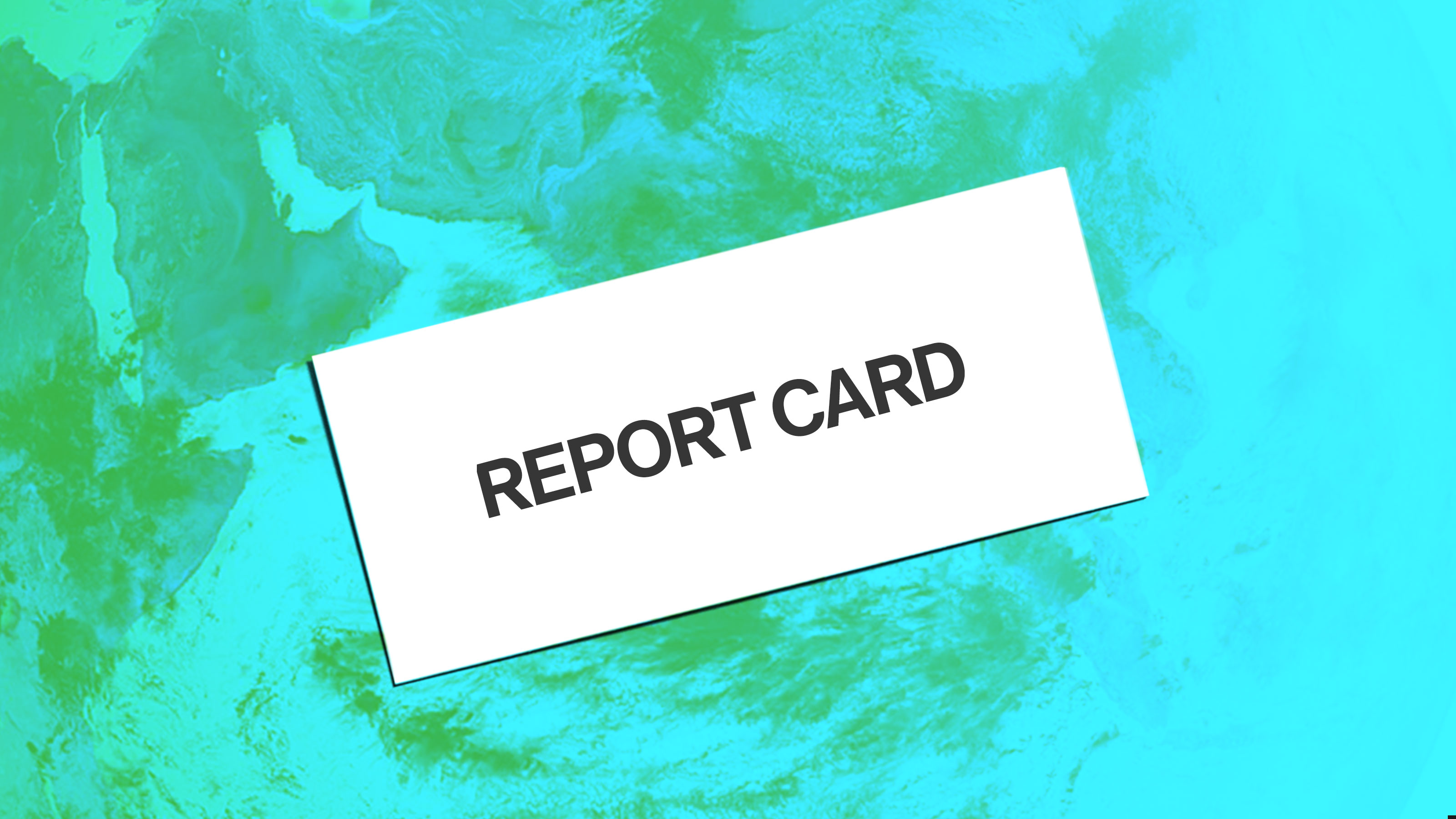Our planetary health report card looks really grim
We must do better.

If we are going to cope with a changing climate and exploding global population, nearly everything about life needs to shift— including how people grow and eat food. That’s the conclusion of the EAT-Lancet Commission, a group of scientists recommending a new approach for “planetary health.” We rated human progress to see how things are shaping up.
Increase crop diversity: D
Today three quarters of the world’s food comes from just 12 plant and five animal species —even though there are more than 300,000 known edible plants. This leaves the food supply vulnerable to climate change. Seed banks around the world store hundreds of thousands of species, but not enough are being planted. Fabrice DeClerck, coauthor of the EAT-Lancet Commission report, says markets, policies, and technologies to address the situation are all missing.
Boost underused crops: D+
Corn, soy, wheat, and rice dominate global agriculture — and research. We need more development and production of underused crops like fruits and nuts, with a focus on improved varieties that have higher yields and resistance to disease and pests. Brent Loken, the commission’s director of science translation, says we must increase production of legumes by 200%, nuts and seeds by 150%, and fruits by up to 75%.
Change fertilizer use: F
Bard College environmental physics professor Gidon Eshel says, “We are as far from where we need to be as we can possibly be.” US farms, especially, need to drastically reduce fertilizer use, while farms in many other areas around the world — where yields are a fraction of what they could be — need to use more. Precision agriculture technologies under development can help farmers pinpoint the right amounts, but it’s still too expensive for many.
Optimize land use: D+
Growing more food is crucial, but much of the world’s land is difficult to farm today. Research could focus on improving these tough environments. For example, large-scale mapping of soil characteristics could uncover areas that hold more promise for food production and spot those better suited to conservation. Optimizing where we grow is an “absolute necessity,” says Loken: “You’ve got to select the right crop, plant it at the right time, in the right place.”
Increase seafood production: C
Wild catches are exhausted, but the world needs more supply—particularly of farmed oysters and other bivalves. Norway has been making progress on sustainable salmon farming, but new aquaculture technologies are still in their infancy. What happens when antibiotic use is increased? Where does feed come from? What happens if genetically modified fish escape into wild populations? Nobody is quite sure.
Use less water in agriculture: D
Farmers need to make the most out of every drop. Out go the massive and inefficient crop sprinklers in favor of micro-irrigation systems that reduce water use by, for example, dripping directly into the roots of plants. After that, we need to get smarter about what crops are grown where. “Better crop-environment matching would make big gains here,” says DeClerck.
Eat less meat: C
A more plant-based diet will set the baseline for some of these other changes, and reduce greenhouse-gas emissions at the same time. But while companies like Impossible and Beyond Meat are expanding the appeal of plant foods, it’s a shift that is constrained mainly by culture, political will, and personal preference rather than technology.
Cut food waste: C+
An estimated 50% of Canada’s food gets discarded, typical of many Western countries. Systems to monitor food and tell consumers when it’s safe or unsafe to eat could help. Restaurants could also reduce waste by identifying and responding to customer eating patterns.
Reduce food loss: D
Lots of food is destroyed in production or transportation, before it is sold or eaten. While little food is wasted by consumers in rural areas of the developing world, poor storage and infrastructure can cause produce to spoil or become infested with pests or mold.
Improve trade policy: F
Strong local food systems can be important, but if everybody grows their own food “we’re in big trouble,” says Loken, because that essentially guarantees an increase in destructive practices such as deforestation. The world will benefit from trade policies that encourage regions best suited for food production to supply areas where agriculture poses greater risks to ecosystems or the global environment
Keep Reading
Most Popular
Large language models can do jaw-dropping things. But nobody knows exactly why.
And that's a problem. Figuring it out is one of the biggest scientific puzzles of our time and a crucial step towards controlling more powerful future models.
The problem with plug-in hybrids? Their drivers.
Plug-in hybrids are often sold as a transition to EVs, but new data from Europe shows we’re still underestimating the emissions they produce.
Google DeepMind’s new generative model makes Super Mario–like games from scratch
Genie learns how to control games by watching hours and hours of video. It could help train next-gen robots too.
How scientists traced a mysterious covid case back to six toilets
When wastewater surveillance turns into a hunt for a single infected individual, the ethics get tricky.
Stay connected
Get the latest updates from
MIT Technology Review
Discover special offers, top stories, upcoming events, and more.